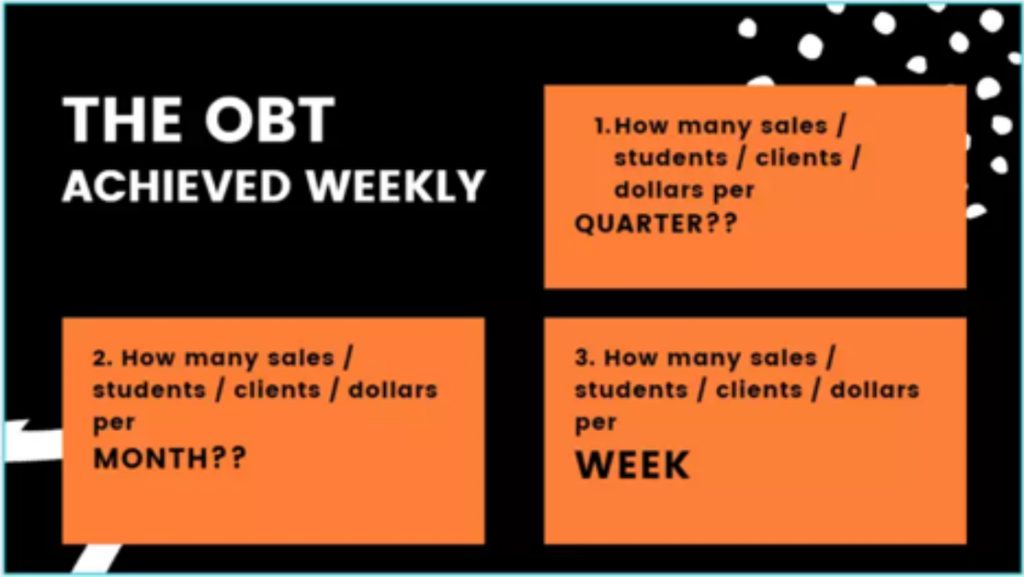Successful businesses consciously PLAN for PROFIT in their businesses.
They have a goal to aim for, they know what they are going to sell, they have a clear customer journey, and they organize their time according to their goal tasks, and they have very clear and definite answers to these questions:
What products and services will you offer your customers?
What order will you offer them in?
What steps will each person walk through in your business from prospect, to lead, to sale, to repeat buyer?
How much money do you need to earn to cover your overheads and pay yourself a wage?
How do you keep your business growing in profit year after year?
In this article, I am going to take you through 5 simple steps that will help you make your course creation or education-based business PROFITABLE.
How To Increase Your Income in Your Online Course or Education-Based Business
There are SO many ways to make money with educational content and services!
But SO many course creators, coaches, consultants, experts and education-based business owners are completely missing out on their earning potential, just because of a few simple planning steps that they have missed!
If you are selling (or plan to sell) mini-courses, signature online courses, books, eBooks, done-for-you services, done-with-you services, retreats, boot camps, one-on-one coaching, or affiliate-based products in your niche – then you NEED to read through this article to ensure that you have set yourself up for maximum profit!
Next, we are going to look at some other critical things that you need to do in your business if you want it to be as profitable as possible:
1. Have ONE Goal For Your Business – What is Your ‘ONE BIG THING’?
In the book ‘The One Thing‘, Gary Keller tells us how important it is to focus on ONE THING ONLY if we want to succeed at anything.
Before I read this book, I attributed my success to the very same principle – focus = success.
Have just ONE major goal in your business per YEAR and base every decision you make and every task presented to you, around whether or not it will directly enable you to progress towards your one goal – which I have coined your ‘one big thing’, or ‘OBT’.
So grab a pen and paper right now and ask yourself, ‘what is my OBT for the next 12 months?‘
- If you could only achieve ONE thing this year, what would it be?
- Your ONE main ‘RESULT’ that you will have at the end of the year?
- What ONE thing will ‘knock down’ all (or most of) your other ‘dominos’ in your business?
What’s my ‘OBT’?
Mine is to: sustain at least X members in my Edupreneur Academy every month.
EVERYTHING I do is held up against that one goal. “Will doing this task lead to more members in my academy?“
If the answer is no, I ditch the task and move on.
Focus is power.
What is YOUR OBT for the next 12 months?
2. Break Down Your Goal Into DAILY Actions
In his book ‘The 12 Week Year‘ Brian Moran explains how 12 months can feel like such a long way away, that many of us lose urgency, motivation and action for our goals if we only think of them as 12 months away.
Instead, success is much more likely to come to us if we further break down that 12-month goal into quarters, months, days and even hours…
Every minute counts in business.
Time really IS money.
Everything we do should be moving us towards our OBT.
So, the next step is to break down your OBT into quarterly, monthly, weekly and daily numbers.
EG if your goal is to make $100k per year, you’d need to make:
- $25,000 per quarter
- $8,333 per month
- $1,923 per week
- $274 per day
Thus, each day becomes: “How will I ensure that I earn $274 today and tomorrow?” or, “What can I do today to ensure that I make $1,923 next week?“….
So, whether your goal is a certain number of clients buying a specific product from you; or a certain number of students enrolling in a specific course, or a certain number of dollars earned per year…. now break it down to quarter, month, week and day…..

3. Make Success Inevitable by Scheduling Your OBT Tasks
Once you know what level you need to reach daily, then you’ll be able to plan WHAT tasks you need to do in order to make it happen.
I like to put recurring appointments with myself in my calendar to work on essential tasks in my business that I know move me towards my OBT each day. Every business is slightly different, but I personally aim to spend 70% of my time creating content and marketing, and 30% with clients and on client projects – that way I always have more income-generating content being produced and more people pouring into my customer journey.
4. Plan Your Customer Journey – What Products & Services Will You Sell?
Should You Create Mini-Courses, Big Courses, Coaching Programs or a Membership?
Maybe you have LOTS of course ideas, but are not sure where to start, or how you will put them in front of your market?
Or maybe you don’t know whether to create a big signature course, lots of mini-courses, a coaching program or a membership academy?
In the video below, I will show you a model that will change EVERYTHING for you if you are a course creator, coach, consultant, expert or business owner in the information or education space….
5. Price Your Products and Services PROPERLY!
I see way too many course creators and business owners just randomly plucking pricing out of the sky or asking equally as inexperienced business owners what they charge in Facebook groups.
STOP. Do NOT pick random prices for your offers!
This is EXACTLY what causes so many businesses to go broke.
Your products and services MUST make you a profit, just as they must deliver value to your customer.
I do have an in-depth article on ‘How To Price Your Online Courses and Coaching Programs‘, but here are a few things that you MUST consider and calculate before you ever put a dollar sign next to what you sell:
What do you charge per hour?
How many hours will it/did it take you to create the product?
How many hours will it take you to deliver the product to each person?
How many admin hours will it take to deliver the product? Moderating Facebook groups, doing emails etc?
Will you have any other costs to develop or deliver this product? (eg software, equipment, venue hire, internet etc)
Are you qualified and highly experienced? What are that training and experience worth?
What savings are your learners making financially by skipping the mistakes and getting straight to the results they seek with you?
Are your customers likely to earn money from what you are helping them with?
What are the lowest and highest benchmarks in your industry for similar offers and what do those consumers get in return?
Once you are certain that your pricing covers your expenses, your production costs, and your delivery costs, reflect your expertise and beats the competition in the deliverable – THEN you can price it.
ⓘ As part of our ongoing support for startups and SMEs, LAFFAZ Media publishes feature and resource articles that may include references and links to external websites. These inclusions are selected at our editorial discretion to provide valuable information or suggestions to our readers. LAFFAZ Media does not control, endorse, or assume responsibility for the content or practices of external websites. For more details, please refer to our Terms and Conditions.






